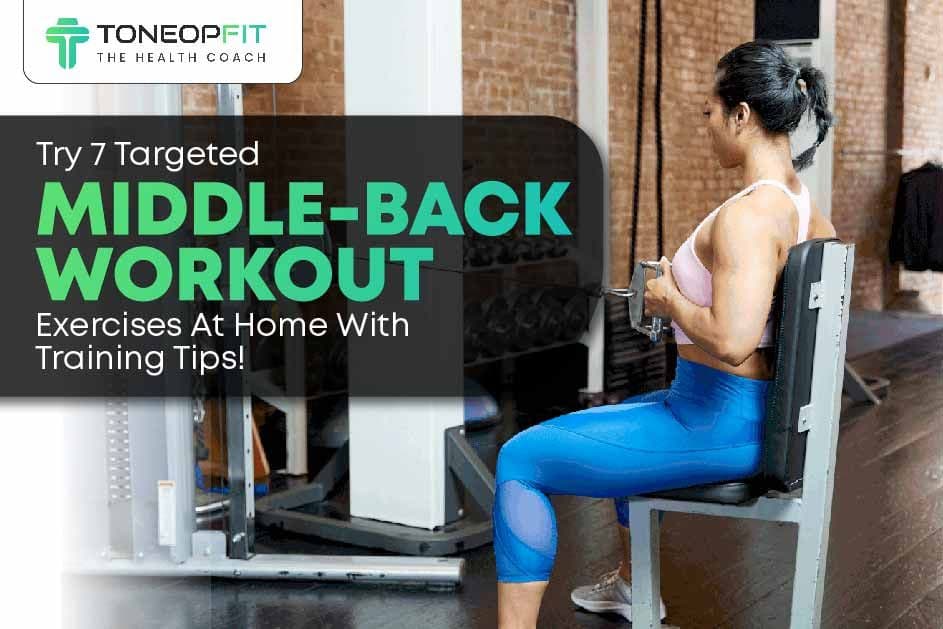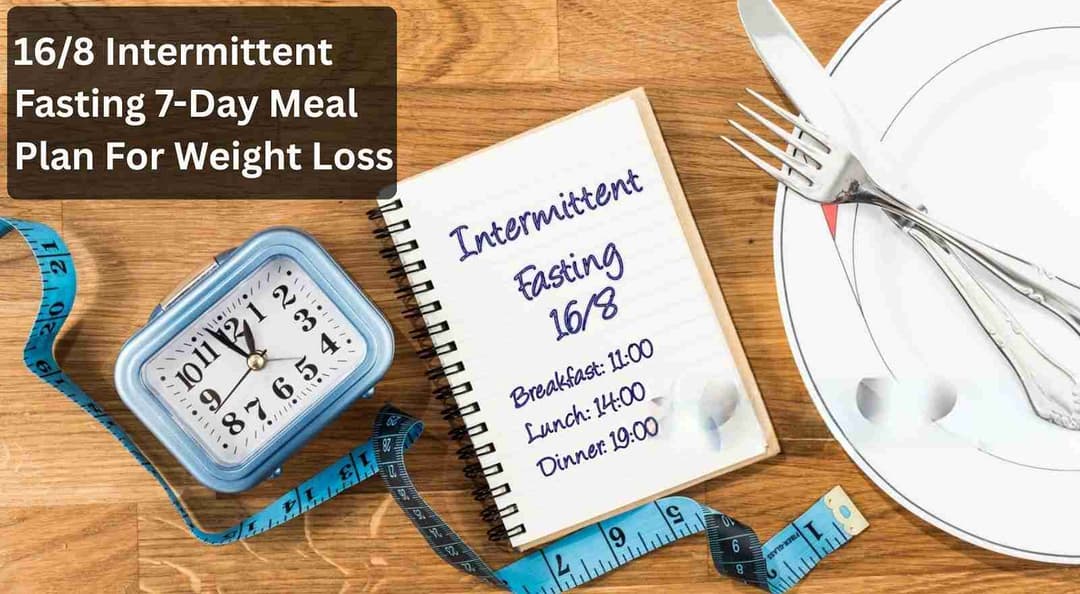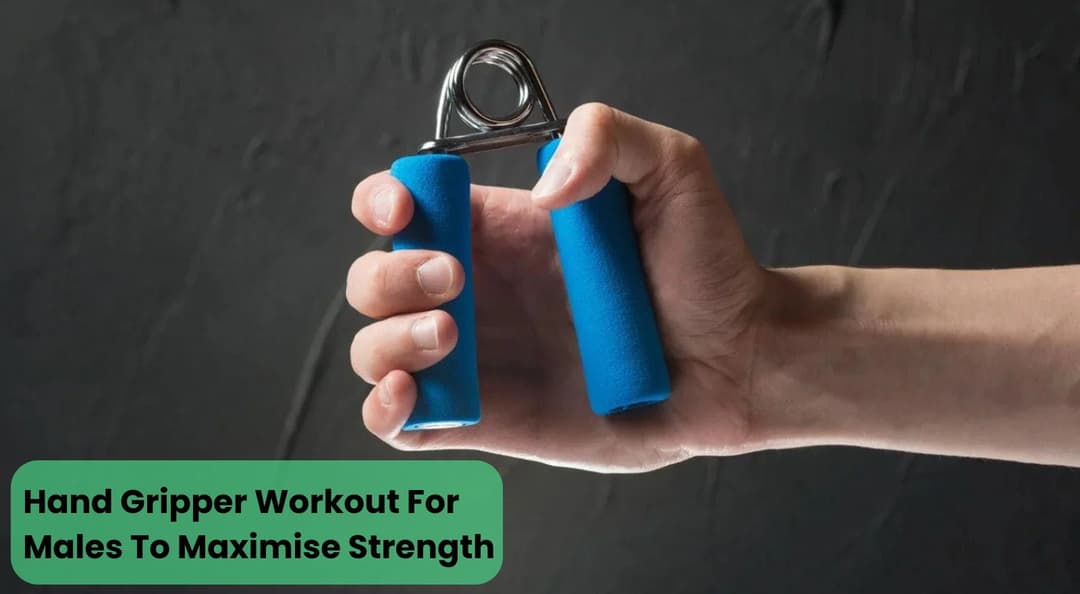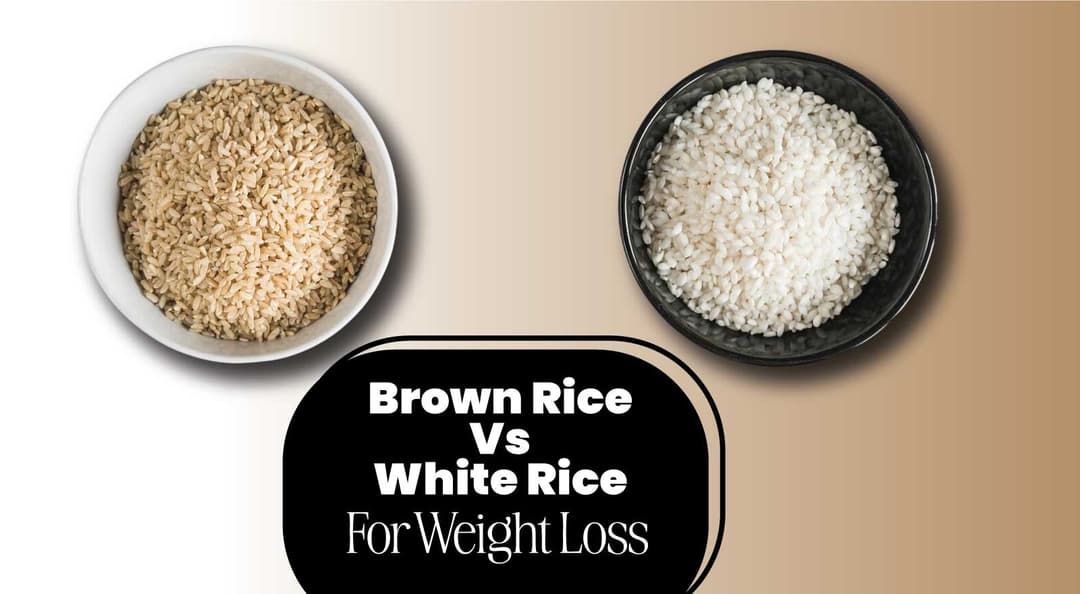Strengthening the middle back muscles is essential for maintaining good posture, preventing injury, and enhancing upper body strength. Middle backside discomfort, also known as chest pain, is an unpleasant and often debilitating condition that affects the area between the base of the neck and the lower part of the chest, known as the thoracic spine. Middle-back workout exercises effectively target the discomfort in this region from muscle strains, ligament sprains, and joint dysfunction, often exacerbated by poor posture or sudden movements.
Treatment approaches vary depending on the cause, ranging from conservative measures and painkillers for mild cases to more intensive interventions for severe discomfort. But for a quick and sustainable fix, physical therapy, chiropractic care, and targeted middle-back workout exercises help strengthen muscles and manage pain, offering relief and promoting recovery, especially for athletes experiencing mid-back discomfort.
So, if you experience persistent chest pain in the centre of your backside, explore these middle-back workout exercises to lower your discomfort with training tips for your lower middle back. This blog also discusses ways to think back naturally, so keep reading!
Table Of Contents
1. 7 Middle Back Exercises At Home
2. How Do You Train Your Lower Middle Back?
3. How Do I Get A Thick Mid Back? Are 4 Back Exercises Enough?
4. What Is The Difference Between Middle Back And Lats?
5. Expert’s Advice
6. The Final Say
7. FAQs
8. References
7 Middle Back Exercises At Home

Let’s explore these targeted middle back workout exercises which you can try in the comfort of your home:
1. Seated Cable Rows
These middle-back workout rows effectively target the mid-back muscles, including the rhomboids, middle traps, and rear deltoids, which are crucial for improving posture and spinal stability. Variations such as changing grip width, adjusting seat position, and incorporating pauses or isometric holds can intensify the workout and target different mid-back areas.
Steps to Perform Seated Cable Rows:
1. Sit comfortably on the seat of the cable row machine with your feet flat on the footrest, knees slightly bent, and back straight.
2. Grab the handles with an overhand grip, ensuring your hands are shoulder-width apart or slightly wider.
3. Initiate the movement by retracting your shoulder blades and pulling the handles towards your lower chest in a smooth, controlled motion.
4. Focus on squeezing your mid-back muscles as you pull the handles towards you, keeping your elbows close to your body.
5. Once you've pulled the handles as far back as comfortably possible, pause to maximise muscle engagement.
6. Slowly extend your arms to return to the starting position.
2. Superman Exercise
The Superman middle back workout exercise strengthens the mid and lower back muscles, particularly the erector spinae, to enhance spinal stability and reduce the risk of lower back pain. Variations such as alternating arm and leg lifts, holding the extended position, or adding resistance with light weights or resistance bands can increase the challenge and target specific mid-back areas.
Steps to Perform Superman Exercise:
1. Lie face down on a comfortable mat or floor with your arms extended overhead and legs straight.
2. Engage your core muscles to stabilise your spine and lift your arms, chest, and legs off the ground simultaneously.
3. As you lift, focus on squeezing your mid-back muscles to maximise activation.
4. Hold the lifted position for a few seconds, ensuring your head and neck remain neutral.
5. Slowly lower back to the starting position with control, allowing your arms, chest, and legs to touch the ground lightly.
3. Prone Y's And T's
These exercises target the mid-back muscles, including the traps, rhomboids, and rear deltoids, which play a crucial role in shoulder stability and posture. Variations such as adjusting arm positioning, incorporating pauses or isometric holds, or using resistance bands can modify the intensity and target specific areas of the mid-back.
Steps to Perform Prone Y's and T's:
1. Lie face down on a mat or floor with your arms extended in a Y or T position, depending on the variation you're performing.
2. Engage your core muscles to stabilise your spine and lift your arms and chest off the ground, focusing on squeezing your mid-back muscles.
3. Keep your neck neutral and avoid overarching your lower back.
4. Hold the lifted position for a few seconds and release it, ensuring a solid contraction in your mid-back muscles.
4. Face Pulls
These middle-back workout pulls target your mid-back muscles, particularly the rear deltoids, rhomboids, and traps. These muscles play a crucial role in improving posture and shoulder stability. Variations can include changing the attachment height and grip width or using different handle attachments to target specific areas of the mid-back.
Steps to Perform Face Pull:
1. Attach a rope or handle to a cable machine at approximately shoulder height.
2. Stand facing the machine with your feet shoulder-width apart and grab the handles with an overhand grip.
3. Pull the handles towards your face, focusing on squeezing your shoulder blades together and keeping your elbows high.
4. Hold the peak contraction for a moment, then slowly return to the starting position.
5. Thoracic Extension Stretch
This middle-back workout stretch targets the mid back and helps improve mobility and flexibility in the thoracic spine. It also helps alleviate stiffness and discomfort in the mid-back region. Variations can include using a foam roller or performing the stretch in different positions, such as kneeling or standing.
Steps to Perform Extension Stretch:
1. Sit on the floor with your legs extended. Place your hands behind your head and interlace your fingers, supporting the weight of your head.
2. Slowly arch your upper back, bringing your elbows back and opening your chest.
3. Hold the stretch for 15-30 seconds, focusing on feeling a gentle stretch in your mid back.
4. Relax and return to the starting position, then repeat for 2-3 sets.
6. Sumo Deadlift
This form of deadlift is a compound middle-back workout exercise that targets the entire posterior chain, including the lower back, glutes, and hamstrings. It helps improve overall strength and power while also enhancing hip mobility. Variations can include adjusting foot stance width or using different grip variations to target specific areas of the back.
Steps to Perform Sumo Deadlift:
1. Stand with your feet wider than shoulder-width apart and toes pointed slightly outward.
2. Grip the barbell with a wider-than-shoulder-width grip, palms facing inward.
3. Engage your core, hinge at the hips, and lower your torso while keeping your back flat.
4. Keep your chest up and shoulders back as you drive through your heels to lift the barbell, extending your hips and knees.
5. Once standing upright, pause briefly at the top, then lower the barbell back down in a controlled manner.
7. Hyperextensions
This exercise targets the erector spinae muscles of your lower back, promoting strength and stability. It also helps improve posture and reduce the risk of lower back pain. Variations can include adjusting body positioning, adding resistance with weights or bands, or performing the exercise on a hyperextension bench.
Steps to Perform Hyperextensions:
1. Position yourself face down on a hyperextension bench with your feet secured and your upper body hanging off the edge.
2. Cross your arms over your chest or place your hands behind your head, whichever is more comfortable.
3. Engage your core and slowly lift your upper body until it is in line with your legs, focusing on squeezing your lower back muscles.
4. Hold the peak contraction for a moment, then lower back down in a controlled manner until your torso is parallel to the ground.
Also Read: Discover The Most Effective Workout Routine For Back Strength And Posture!
How Do You Train Your Lower Middle Back?
Functional training for the lower middle back involves exercises that mimic real-life movements and improve your ability to perform daily activities easily and efficiently. Let’s explore these essentials of functional training to target your lower middle back:
1. Core Stability Exercises
These exercises focus on strengthening the muscles stabilising your spine and pelvis, including the lower back. Planks, side planks, and variations like those with leg lifts engage the entire core, including the lower middle back. Ensure proper form by maintaining a neutral spine and engaging the core muscles throughout the exercise. Aim for a robust and stable position without sagging or lifting the hips too high.
2. Hip Hinging Movements
Hip-hinging exercises, such as deadlift variations and kettlebell swings, are essential for strengthening the posterior chain, including the lower back, glutes, and hamstrings. When performing deadlifts, hinge at the hips while keeping the spine neutral and the core engaged. Focus on pushing the hips back and maintaining tension in the lower back throughout the movement. With kettlebell swings, drive the hips forward explosively while maintaining a strong core and neutral spine.
3. Multi-Planar Movements
Incorporating exercises that challenge your lower back muscles in multiple planes of motion improves overall stability and functional strength. Wood chops, cable rotations, and Russian twists engage the obliques and lower back muscles while promoting rotational strength and stability. While performing these movements, pay attention to proper spinal alignment and rotation through the thoracic spine.
Also Read: Which Is The Best Blood Circulation Exercise? Know 7 Tips To Improve!
4. Balance And Stability Training
Exercises that require balance and stability engage the core muscles, including the lower back, to maintain proper alignment and control. Single-leg deadlifts, stability ball exercises, and balance board movements challenge proprioception and core stability while targeting the lower middle back. Focus on maintaining balance and control throughout each exercise to maximise engagement of the lower back muscles.
5. Functional Movements
Functional exercises mimic real-life movements and improve your ability to perform daily activities easily. Farmer's carries, suitcase carries, and loaded carries engage the muscles of the lower back, core, and stabilising muscles while promoting functional strength and endurance. Maintain proper posture and alignment while carrying the load to target the lower middle back muscles effectively.
6. Bodyweight Exercises
These exercises effectively strengthen the lower back muscles without the need for additional equipment. Superman holds, bird dogs, and reverse hyperextensions target the lower middle back while improving spinal stability and mobility. Focus on controlled movements and proper form to effectively engage the target muscles.
How Do I Get A Thick Mid Back? Are 4 Back Exercises Enough?
To develop a thick mid-back, it's essential to incorporate a complete workout routine that effectively targets the muscles in this area. While four back exercises can be a good start, it's important to ensure they target different muscle groups within the mid-back region and provide enough variety to stimulate growth and strength.
Note these essential consideration training tips:
Consideration | Training Tips | Examples |
Exercise Selection | Choose exercises targeting mid-back muscles like the rhomboids, traps, lats, and erector spinae. | Examples include bent-over rows, lat pull-downs, seated rows, and deadlifts. |
Volume and Intensity | Aim for a balanced combination of sets and reps with challenging weights to stimulate muscle growth. | For instance, perform 3-4 sets of 8-12 reps with a challenging weight that allows for proper form. |
Progressive Overload | Continuously challenge muscles by progressively increasing workouts' load, volume, or intensity over time. | Start with lighter weights and gradually increase the resistance as your strength improves. |
Proper Form Alignment | Maintain proper form during each exercise to maximise muscle engagement and prevent injury. | Focus on keeping your back straight, shoulders back, and chest up during exercises like rows and deadlifts. |
Rest and Recovery | Allow adequate rest between workouts for muscles to recover and grow. | Incorporate rest days into your routine, and aim for 7-9 hours of sleep each night to support recovery. |
What Is The Difference Between Middle Back And Lats?
Note these major differences between the middle and lats in your body to pick the right middle-back workout for your goal:
Differentiators | Middle Back | Lats (Latissimus Dorsi) |
Location | Refers to the back region between the upper and lower back, encompassing the thoracic spine. | Located on the sides of the torso, spanning from the upper arm to the lower back. |
Muscles Involved | Includes muscles such as the rhomboids, middle and lower trapezius, and erector spinae. | It consists primarily of the latissimus dorsi muscle, the most significant muscle in the back, and synergistic muscles like the teres major and minor. |
Functions | Primarily responsible for maintaining posture, stabilising the spine, and facilitating movements like bending, twisting, and extending the back. | Known as the "swimmer's muscle," the lats are responsible for movements like shoulder adduction (bringing the arms down towards the body), shoulder extension (pulling the arms down behind the body), and internal rotation of the shoulder joint. |
Expert’s Advice
As a dietitian, I recommend incorporating moderate exercise into your daily routine to boost energy levels and overall fitness. Focus on compound movements like bent-over rows, pull-downs, and seated rows to effectively target multiple muscles in the mid-back region. Additionally, isolate exercises such as face pulls, and hyperextensions should be included to engage key muscle groups specifically.
Prioritise pre-meal snacks rich in protein to support muscle repair and growth and ensure adequate hydration to aid recovery. Consistency and proper form are paramount, so gradually increase exercise intensity, and don't hesitate to seek guidance from a certified trainer if needed. Adhering to these recommendations optimises your middle-back workout routine and effectively achieves your fitness goals.
Health Expert
Akshata Gandevikar
The Final Say
After exploring all the essentials, be assured that a well-rounded middle-back workout promotes overall back health, improves posture, and enhances functional strength. You can effectively strengthen and develop this area of your body by incorporating various exercises that target the mid-back muscles, including rows, lat pull-downs, and deadlifts. Also, focusing on proper form, gradually increasing resistance, and allowing for adequate rest and recovery helps optimise the benefits of your middle back workout routine.
FAQs
1. Can I rely on a back workout for middle back pain?
While strengthening exercises targeting the middle back can help alleviate some types of middle back pain, it's essential to address the underlying cause. Consulting with a professional to determine the root cause of your middle back pain is crucial for personalised recommendations, including specific exercises, stretches, posture adjustments, or other treatments to address your condition effectively.
2. Which is the best exercise for mid-back training?
Several exercises effectively target the mid-back muscles, including the rhomboids, traps, and erector spinae. Rows are considered one of the best exercises for mid-back training. Bent-over rows, seated rows, and inverted rows are all excellent choices. These exercises engage multiple muscles in the mid-back region and can be easily adjusted to accommodate various fitness levels and equipment availability.
3. What are the best mid-back exercises at the gym?
At the gym, you can access a wide range of equipment and exercises to target the mid back effectively. Some of the best mid-back exercises at the gym include:
- Bent-over rows: Using a barbell, dumbbells, or a cable machine, bent-over rows target the rhomboids, traps, and lats.
- Lat pull-downs: This exercise targets the lats primarily but also engages the mid-back muscles, especially when using a wide grip.
- Deadlifts: While primarily a lower back and leg exercise, deadlifts also engage the mid-back muscles, particularly the erector spinae, traps, and rhomboids, making them a great compound exercise for overall back development.
References
- https://my.clevelandclinic.org/health/body/21632-back-muscles
- https://www.medicalnewstoday.com/articles/325373
- https://www.medicalnewstoday.com/articles/323204#:~:text=Strengthening%20and%20stretching%20exercises%20for,knee%2Dto%2Dchest%20stretches.&text=Stretching%20the%20back%20muscles%20after,prevent%20muscle%20soreness%20and%20injury.
- https://versusarthritis.org/about-arthritis/conditions/back-pain/
- https://www.performancelab.com/blogs/fitness/exercises-for-back-thickness
About ToneOp Fit
ToneOp Fit is a platform dedicated to improving and maintaining good health through a comprehensive range of goal-oriented health plans with up to 3 Coach support. With a range of Weight Management, Medical Condition, Detox Plans, and Face Yoga Plans, the app also provides premium health trackers, recipes and health content. Get customised diet, fitness, naturopathy & yoga plans and transform yourself with ToneOp.








































